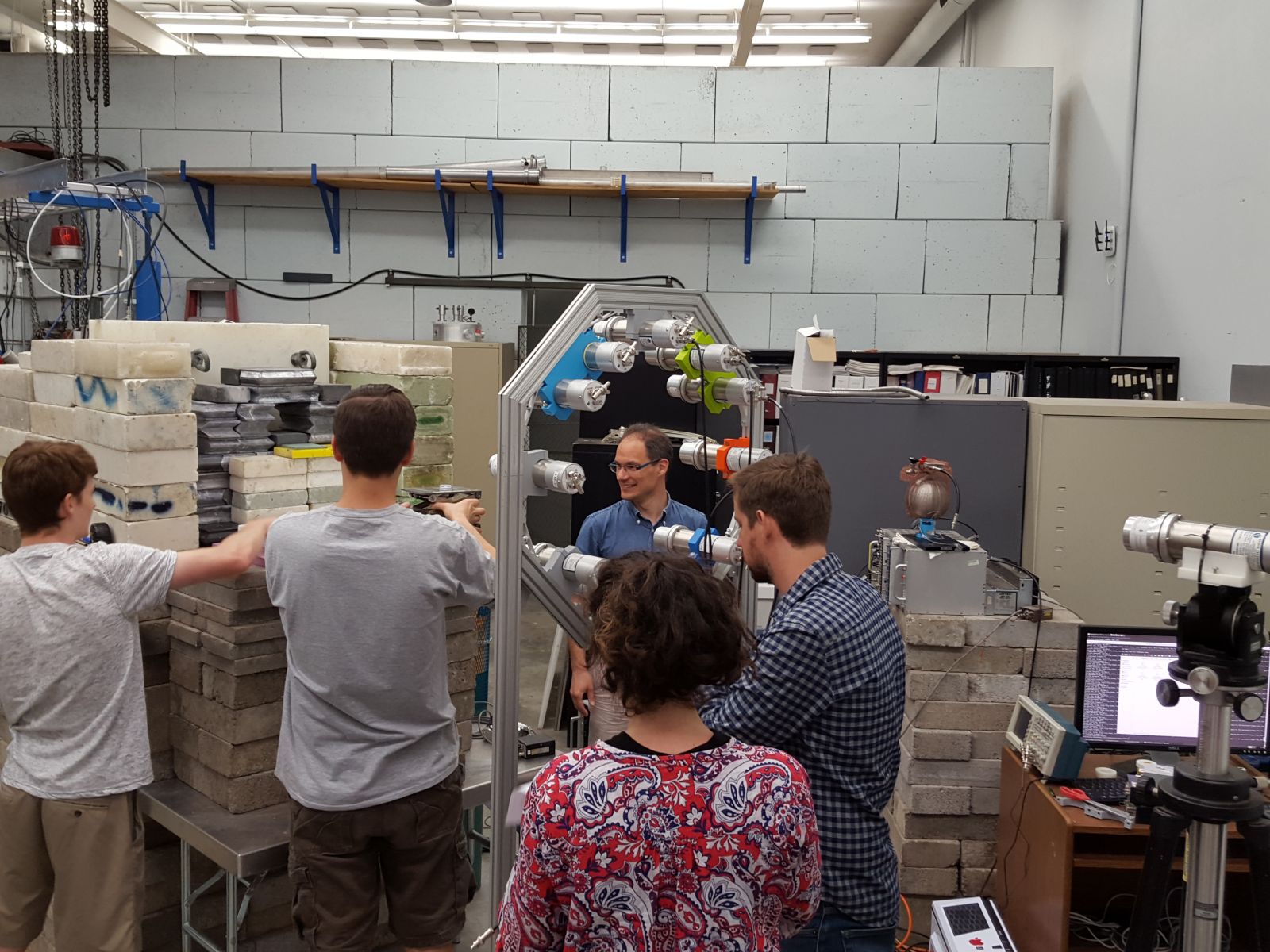This page shows the projects that graduate students in the group are currently working on.
Understanding the surface layer of PPC detectors (A. Piliounis)
Lead: A. Piliounis
There are 2 main surfaces on a PPC detector; the n+ high-voltage contact, and the "passivated surface", located on the same face as the point contact (the top surface on the detector shown on the right). Currently, we are developing tools to precisely characterize the n+ surface, which is formed by drifting lithium atoms (n-type) into the bulk of the germanium. We have shown in previous work that the lithium results in a region of partially active germanium just underneath the surface, the so-called "transition layer", where events are degraded in energy and can mimic the energy spectrum (signal) of dark matter.
We are specifically interested in developing methods to:
- rapidly measure the transition layer using a flood source
- model the events in the transition layer
- reject events in the transition layer
Modelling the signals in PPC detectors
Lead: Vasundhara
We are working on variety of tools that allow us to model the signals that are recorded in PPC detectors, mostly using the Radware software developed by David Radford at ORNL. By being able to model signals precisely, we aim to:
- localize events in the detector based on pulse shape
- precisely determine the energy of events based on pulse shape
- reject background events
Measuring the ionization yield of nuclear recoils in gaseous neon (NEWS-G)

Lead: M. Vidal
We are using one of the spherical proportional counters from the NEWS-G experiment to measure the ionization yield of nuclear recoils using an accelerator facility at TUNL (North Carolina, US) and collaborating with the group of P. Barbeau at Duke University.
When a dark matter particle or a neutrino interacts in one of these spherical proportional counters, a nucleus from an atom in the gas recoils and ionizes the gas. In our experiment, we use a beam of protons (or deuterons) on a target to create a mono-energetic neutron beam. Neutrons from that beam then scatter in our spherical proportional counter, creating nuclear recoils (of known energies), much like those created by a neutrino or dark matter particle. By measuring the amount of ionization that we obtain from a known nuclear recoil (the "ionization yield"), we can determine the conversion from the amount of ionization to the original energy of the incoming neutron. This, in turn, will allow us to infer the energy of an incoming dark matter particle or a neutrino when we observe a given ionization signal.
Using machine learning in support of SNO+ (water phase)
Lead: M. Anderson
We are developing several tools to process the SNO+ data using machine learning algorithms (primarily convolutional neural networks). One of the main challenges of this work has been to deal with the large amount of sparsity in the data - of the 10,000 or so photomultiplier tubes in SNO+, only of order 50 or so will have a signal (in the water phase of SNO+). This has led to some new developments in machine learning. Currently, we are working on algorithms that can:
- Determine the position and direction of an event in SNO+ water phase
- Identify, on an event by event basis, neutron capture signals in SNO+ water phase
In particular, the development of the neutron capture signal identification is the first time that the SNO+ (or SNO) detector can be used on an event-by-event basis to identify neutrons, rather than on a statistical basis.

